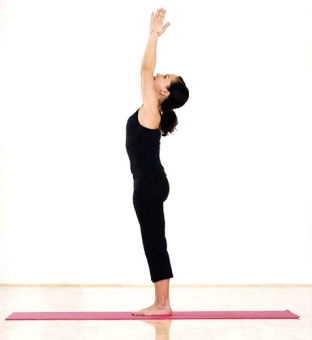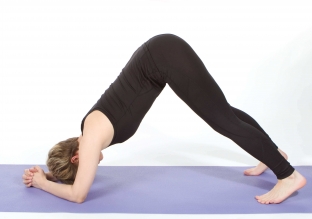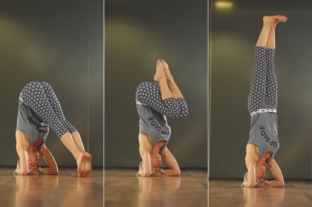Headstand – a great pose that calms the mind and strengthens the core muscles. However, in order to learn how to do a stance, you need to be patient and first strengthen your core, back and shoulders, learn how to maintain the correct body position and balance. In this article, estet-portal.com will tell you what preparation is needed for those who want to master Shirshasana and what sequence of actions is needed to transfer your body to a headstand.
Headstand – prepare the body for Sirshasana
To make the process of mastering the headstand smoother and more successful, during the practice, focus your efforts on working through the points indicated below.
- Strengthen core muscles
Tadasana (mountain pose) is suitable for this. Here's what to do:
- stand in a mountain pose (straight body position, feet parallel, body weight completely transferred to the feet, kneecaps and stomach tense and pulled up);
- press your ankles and hips together;
- retract the navel as much as possible, ribs and hips slightly forward;
- squeeze your shoulder blades together and extend your arms above your head, squeezing your palms;
- while maintaining this position, rise on your toes and try to maintain your balance for five breaths.

- Pay attention to your shoulders and spine
To learn how to properly perform a headstand, it is very important to be able to linger:

- in plank position for 10 breaths (i.e. inhales and exhales);
- in "low bar" (Chanturanga Dandasana) for 5 breaths;
- in forearm plank.
The fact is that plank varieties help to strengthen the core and keep the spine straight during Shirshasana – without this, it is impossible to properly perform a headstand. Therefore, practice the plank regularly.
- Dolphin pose (downward facing dog resting on forearms)
This posture will prepare you for any variation of the headstand by strengthening your shoulders and making it easier to get your hips behind your ears.
- hold your body in dolphin pose for three breaths, lifting your shoulders over your ears and moving your elbows together;
- raise one straight leg with spread toes;
- now on each breath (and there should be three in total) rise higher and higher on the toes of the leg standing on the floor;
- do the movements twice for each leg.
If you do this exercise regularly, you will gradually learn to raise your hips above your shoulders, which, in turn, will get used to holding your body weight – this is important for the headstand.
To get into a headstand, overcome your fear
What fears should a person who wants to master the headstand have to overcome?
- fear of the unknown (being upside down);
- fear of falling.
To cope with your fears, spend as much time as possible in an unfamiliar position for you upside down (downward dog pose, dolphin pose, shoulder stand, etc.).
Fear of falling can be minimized by:
- for support, first stand against the wall, gradually moving away from it further and further;
- Practice Wheel Pose and similar postures that develop flexibility.
How to do the headstand pose – step by step description
To take the Shirshasana pose, i.e. headstand, required:

- Kneel down, clasp your fingers so that they form a triangle. Elbows should be shoulder width apart.
- Place your head between your hands (on the mat).
- Shift the load from your head to your forearms, moving your shoulders away from your ears.
- Slowly straighten your legs, starting with your toes.
- Shift your weight to your forearms and shoulders, tighten your core to lift your fingers off the floor. Bending your legs. In this case, the heels should be near the priests, and the knees – near the chest. Slowly straighten your legs.
In order to ensure that the headstand is performed correctly and to avoid injury, it is best to learn the technique under the supervision and guidance of an experienced instructor.






Add a comment